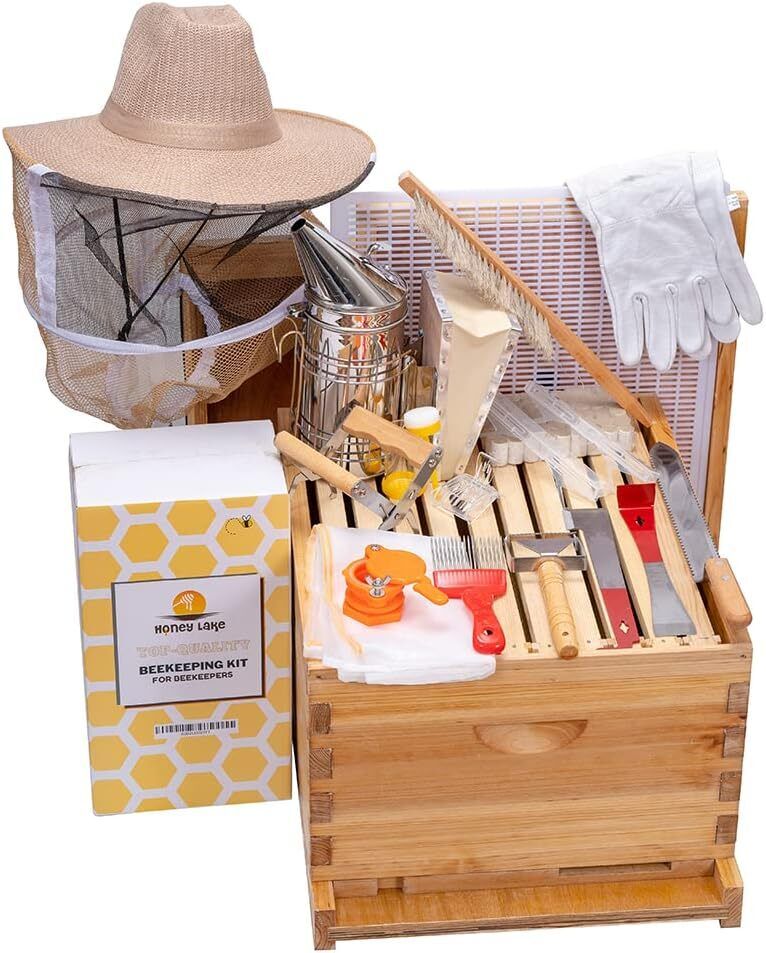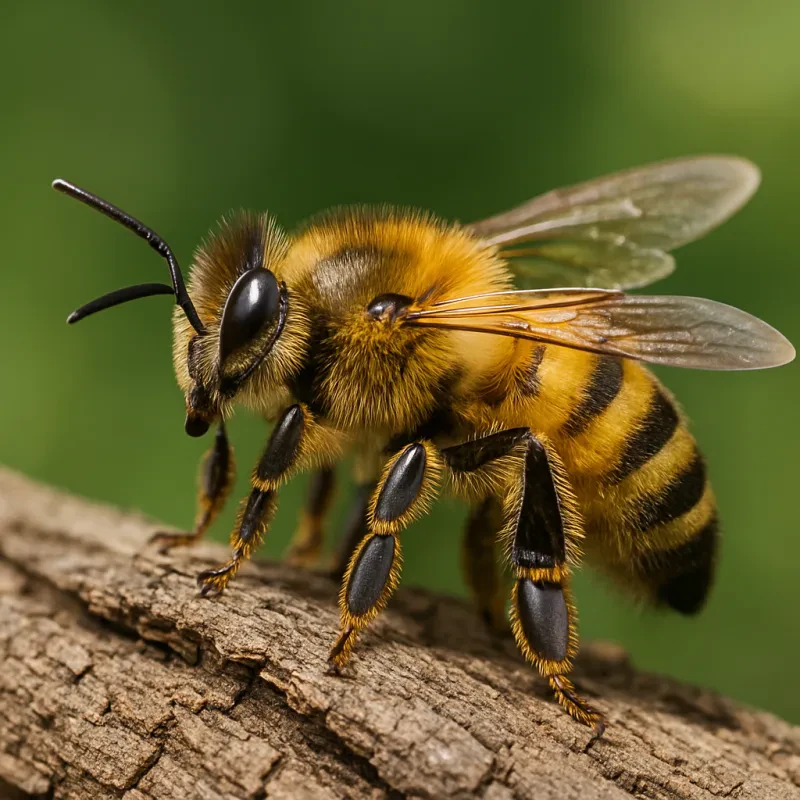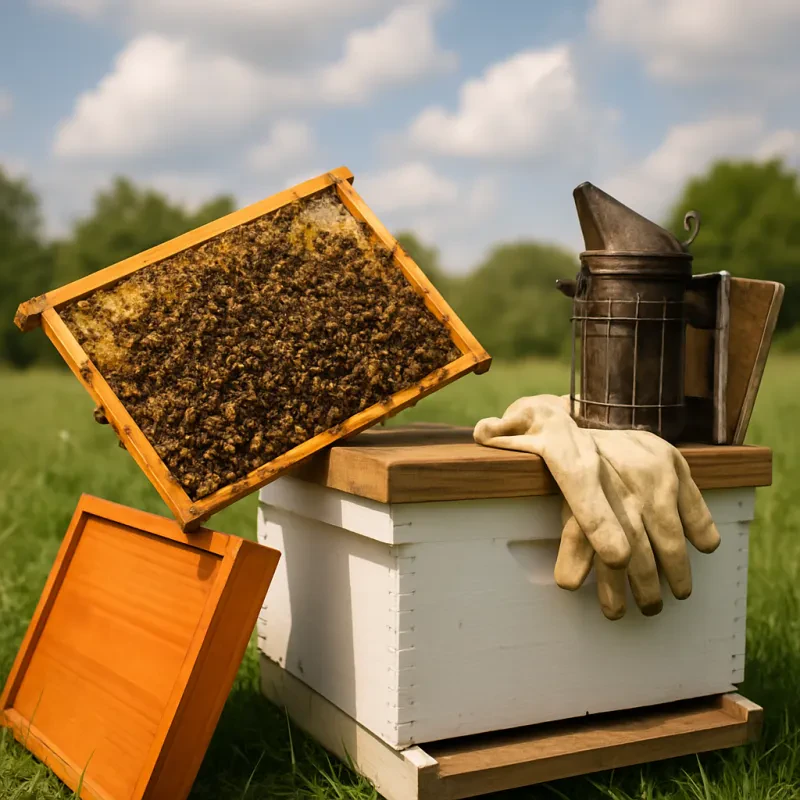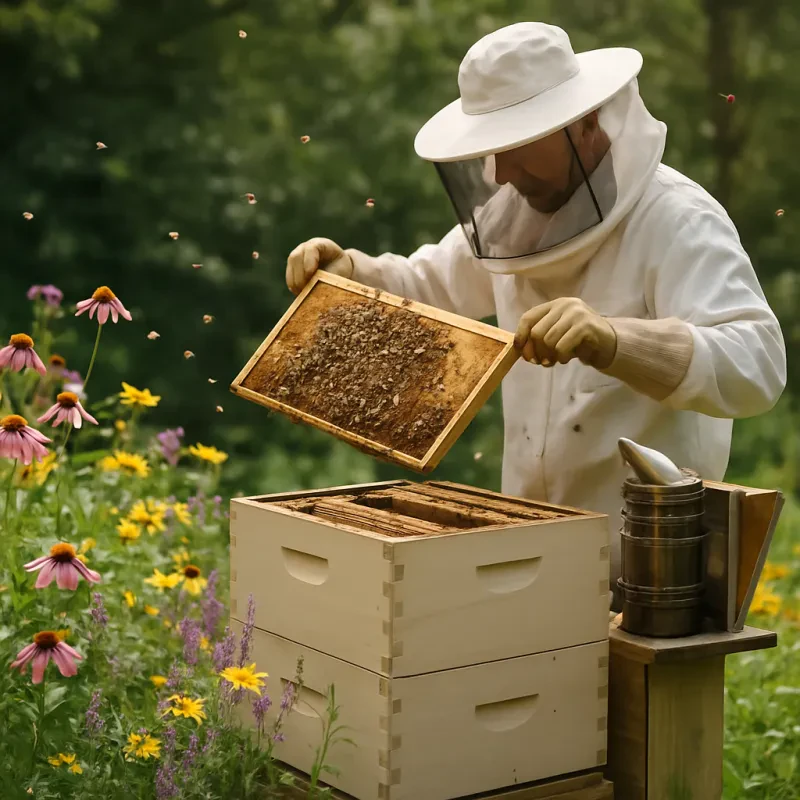$295.99
$248.23
4.98 out of 5 stars7PCS Auto Flow Beehive Set + Cedarwood Brood Box
Experience easy and sustainable beekeeping with this 7PCS Auto Flow Beehive Set alongside a high-quality Cedarwood Brood Box
Product information
Product Review Score
Product links
Beekeeping is a rewarding practice that not only offers the sweet reward of honey but also plays a crucial role in the pollination of many plants and crops. However, beekeepers face numerous challenges, one of which is the threat posed by bears. Bears, particularly black bears and grizzly bears, are known for their love of honey and can cause significant damage to beehives in their quest for it. Protecting beehives from bears is thus an essential aspect of beekeeping in areas where bears are present. This article will explore various strategies beekeepers can employ to safeguard their hives from these formidable intruders.
Understanding the Threat
Bears have a strong sense of smell, which can lead them to beehives from miles away. Once they discover a hive, they can become persistent visitors, returning night after night to feast on the honey and bee larvae. This not only results in the loss of honey but can also destroy hives and kill bees, severely impacting a beekeeper's colony and their productivity.
Physical Barriers
One of the most effective ways to protect beehives from bears is by creating physical barriers.
Electric Fencing
Electric fencing is considered one of the best deterrents for bears. A properly installed and maintained electric fence can provide a psychological and physical barrier. The fence should be at least 5 feet high with multiple strands of wire, and the electric charge should be maintained at a high voltage to ensure it is a sufficient deterrent. Regular checks are necessary to ensure the system is operational, especially after heavy rain or snow.
Reinforced Hive Enclosures
Building a reinforced enclosure around hives is another method. This can be constructed using heavy-duty materials such as metal or reinforced wood, designed to prevent bears from breaking in. The doors and roofs of such enclosures should be securely fastened to resist bear intrusions.
Chemical Deterrents
While physical barriers are effective, they can be complemented with chemical deterrents. Capsaicin-based repellents, which are derived from chili peppers, can be sprayed around hive areas to dissuade bears. These repellents must be applied regularly, especially after rainfall, to maintain their effectiveness.
Sanitation and Hive Placement
Maintaining cleanliness around the hive area is crucial in not attracting bears. Avoid leaving honey or wax remnants outside, which can attract bears to your beekeeping site. Proper disposal of damaged combs and ensuring that honey extraction areas are cleaned can significantly reduce the chances of attracting bears.
Additionally, the strategic placement of hives can play a role in deterring bears. Placing hives in open areas, away from the cover of woods or bushes, can make them less appealing to bears, which prefer not to expose themselves in open spaces.
Community Measures
In areas where bear visits are common, community-wide efforts can be more effective than individual actions. Working with local wildlife agencies to report and manage bear activities can lead to the development of strategies that benefit the entire community, such as relocation of problematic bears or the introduction of community bear-proof waste management systems.
Legal Considerations
Before implementing any measures, it's important to be aware of local wildlife protection laws. In many regions, bears are protected species, and certain actions against them could be illegal. Always consult with wildlife authorities to ensure compliance with local regulations.
Technology and Innovation
Advancements in technology offer new solutions for bear deterrence. Motion-activated lights or noise-making devices can startle and scare bears away from hives. These should be used judiciously to avoid habituating bears to these deterrents.
Bear-resistant Beehives
Innovation in hive design has led to the development of bear-resistant beehives. These hives are made with materials and designs that resist bear intrusions, such as heavy-duty locks and metal reinforcements. While more expensive, they can be a worthwhile investment for those in high-risk areas.
Education and Awareness
Educating oneself and the community about bears' behavior and their ecological role can foster a more harmonious coexistence. Understanding bear habits, such as their seasonal movements and feeding patterns, can help beekeepers implement protective measures more effectively.
Cedar 10-Frame Beehive Kit with Tools & Veil
The complete kit for your beekeeping needs - Cedar 10-Frame Beehive Kit with Tools & Veil
Product information
$155.09 $145.78
Product Review Score
4.44 out of 5 stars
50 reviewsProduct links
Protecting beehives from bears requires a multifaceted approach that combines physical barriers, chemical deterrents, sanitation, strategic hive placement, and community efforts. By understanding the behavior of bears and employing a combination of these strategies, beekeepers can effectively safeguard their hives, ensuring the sustainability of their beekeeping practices and the safety of both their bees and the local bear population. Cooperation with wildlife authorities and adherence to legal requirements are essential in these efforts. With the right measures in place, beekeepers can mitigate the risk of bear intrusions and continue to enjoy the numerous benefits of beekeeping.





